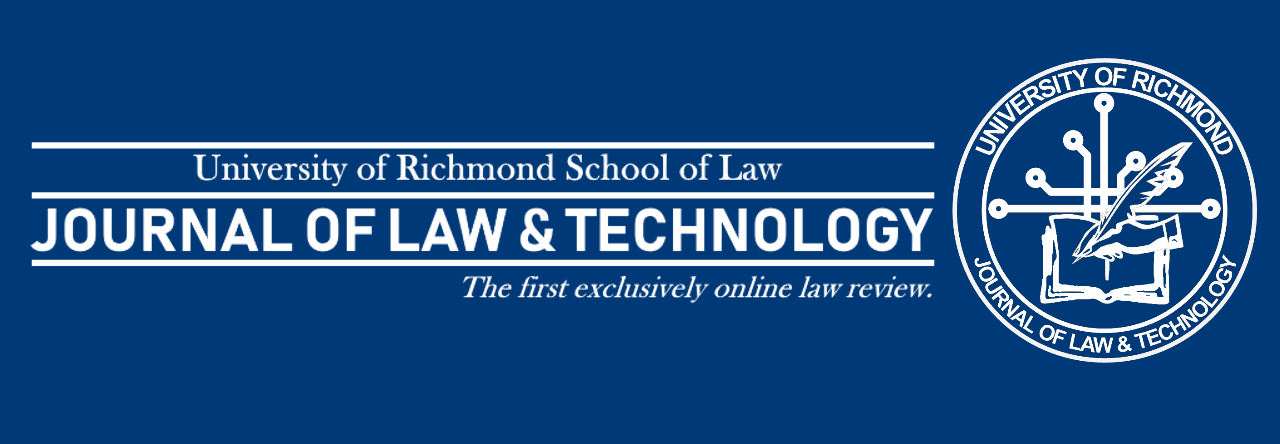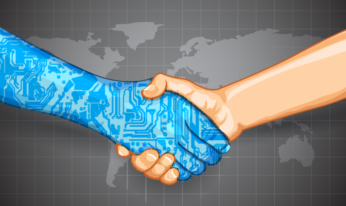
By: Kaley Duncan,
BREAKING: “Surgeon General Warns: Drinking every time Trump lies during debate could result in acute alcohol poisoning.”[1] Would you click on it? This news article first appeared on the media outlet Raw Story and was shared by 243,371 people.[2] To some, this might be funny, but studies show that the general public is taking stock in fictional articles like this one.[3]
Dissemination of fake news articles posted to social media sites is on the rise. The most recent election cycle saw a host of hyperpartisan articles that were false or misleading.[4] In fact, fake news outperformed real news in the last six months leading up to the 2016 presidential election.[5] A study by BuzzFeed’s Craig Silverman uncovered “hyperpartisan Facebook pages are publishing false articles and misleading information at an alarming rate.”[6] Silverman analyzed Facebook users’ engagement by measuring the amount of likes, reactions, and shares any given article received.[7] The study showed that mainstream news – which did not post any “mostly false” content – received much less user engagement than misleading and false news sources.[8] Occupy Democrats, a left-wing site that boasts 4 million fans, put out 20.1% false or misleading articles.[9] Freedom Daily, a right-wing site with 1.3 million fans, put out 46.4% false or misleading articles.[10] Both Occupy Democrats and Freedom Daily received much more Facebook user engagement than any other site in the study, including mainstream news.[11]
So who are these fake news reporters and what are they gaining from misleading the public? The Washington Post interviewed Paul Horner, a fake news writer, who claims Donald Trump is in the White House because of him.[12] Horner makes around $10,000 a month writing and posting fake news stories.[13] He says websites like Google AdSense pay to keep his business going.[14] His stories generate a lot of user clicks which ad companies are willing to pay top dollar for.[15] The reason his business is doing so well? – “…There’s nothing you can’t write about now that people won’t believe,” said Horner. “I can write the craziest thing about Trump, and people will believe it. They don’t fact-check.”[16] In November, Horner posted a story about a protester who got paid $3,500 to protest a Trump rally. His fake story got picked up and retweeted by Trump’s campaign manager Corey Lewandowski.[17] “I made that up. I’ve gone to Trump protests – trust me, no one needs to get paid to protest Trump,” said Horner in reference to the story. [18] The influx of fake stories led some to believe that the articles influenced Facebook users, thereby impacting the election results. Horner is one such person.[19] However, Facebook founder Mark Zuckerberg, disagrees. “I think the idea that fake news on Facebook, which is a very small amount of content, influences the election in any way…is a pretty crazy idea.”[20]
According to some sociologists, Zuckerberg may be right. A phenomenon called confirmation bias suggests that people often click on articles that validate their existing beliefs.[21] Facebook’s algorithm is designed to post articles to users’ walls that are consistent with their interests.[22] If this is true, fake articles may not have persuaded anyone, rather just concreted their already existing beliefs.[23] On the other hand, some believe that the sharing of hyperpartisan stories with false information, could further polarize an already divided nation.[24] If nothing else, fake stories will likely add to the growing distrust of the media.[25]
A study by Pew Research Center states that 61% of millennials rely on Facebook for their political news.[26] With such heavy reliance, many agree that some sort of regulations need to be implemented. The question is how. Governments abroad block Facebook and other forms of social media during election cycles.[27] Such an extreme solution would not be acceptable in a democratic society. Some have suggested the answer is to re-institute some form of the Fairness Doctrine for social media.[28] The Fairness Doctrine was introduced by the Federal Communications Commission in 1949 requiring broadcast licensees to cover issues of public importance fairly.[29] This meant that when covering political news, broadcasters had to give equal air time to both sides.[30] While this may seem like a good idea, many scholars believe that the Fairness Doctrine violated freedom of speech and stifled diversity in the media, which is ultimately why it was repealed in 1987.[31]
While the Fairness Doctrine may not be the answer, big companies are looking for ways to reform. Google announced that it was going to cut off fake news sites from advertising in hopes that the practice of such reporting will run dry without adequate funding.[32] Facebook’s Zuckerberg is more hesitant. Possibly because Facebook has been criticized in the past for allegedly suppressing conservative news stories.[33] Since then, the company has been careful when it comes to skewing the trending page results.[34] “Identifying the ‘truth’ is complicated…I believe we must be extremely cautious about becoming arbiters of truth ourselves,” said Zuckerberg in a recent post on Facebook responding to the public’s demand for reform.[35]
Some are looking for less drastic, alternate solutions. For instance, a group of college students came up with a program they call FiB which uses an algorithm to identify and flag potentially fake or misleading articles.[36] Once a fake article is identified, the program then provides the user with a list of more credible sources from which to gather information.[37] The program is not yet fully developed, but could be a promising solution to this fake news epidemic.[38] Until then, as social media users, you must be weary of your media consumption. Communications experts Dr. Melissa Zimdars and Alexios Mantzarlis say to beware of highly partisan news, shocking headlines, and have a healthy amount of skepticism in general when reading articles posted to Facebook or other forms of social media.[39] In our two-way communication system, we as the audience must demand more from our news. Clicking on click-bait articles with flashy headlines will only feed the growing fake news epidemic that has distorted the free flow of information.
[1] Nathan Wellman, Surgeon General Warns: Drinking Every Time Trump Lies During Debate Could Result in Acute Alcohol Poisioning, U.S. Uncut (Sept. 26, 2016), http://usuncut.com/news/surgeon-general-warns-drinking-every-time-trump-lies-debate-result-acute-alcohol-poisoning/
[2] See Wellman, supra note 1.
[3] See Mathew Ingram, Here’s Why Stamping Out Fake News is a lot Harder Than You Think, Fortune (Nov. 17, 2016).
[4] See Craig Silverman et al., Hyperpartisan Facebook Pages are Publishing False and Misleading Information at an Alarming Rate, BuzzFeedNews (Oct. 20, 2016), https://www.buzzfeed.com/craigsilverman/partisan-fb-pages-analysis?utm_term=.pij128P2k#.mkrZDVLDA.
[5] See Timothy Lee, The Top 20 Fake News Stories Outperformed Real News at the End of the 2016 Campaign, Vox (Nov. 16, 2016), http://www.vox.com/new-money/2016/11/16/13659840/facebook-fake-news-chart.
[6] See Craig Silverman et al., supra note 4.
[7] See Id.
[8] See Id.
[9] See Id.
[10] See Id.
[11] See Craig Silverman et al., supra note 4.
[12] See Caitlin Dewey, Facebook Fake-News Writer: ‘I think Donald Trump is in the White House because of me’, The Washington Post (Nov. 17, 2016), https://www.washingtonpost.com/news/the-intersect/wp/2016/11/17/facebook-fake-news-writer-i-think-donald-trump-is-in-the-white-house-because-of-me/.
[13] See Id.
[14] See Id.
[15] See Google AdSense, https://www.google.com/adsense/start/how-it-works/ (last visited Nov. 22, 2016).
[16] See Dewey, supra note 12.
[17] See Id.
[18] See Id.
[19] See Id.
[20] See Paul Mozur & Mark Scott, Fake News in U.S. Election? Elsewhere, That’s Nothing New, The N.Y. Times (Nov. 17, 2016), http://www.nytimes.com/2016/11/18/technology/fake-news-on-facebook-in-foreign-elections-thats-not-new.html?_r=0.
[21] See Scott Bixby, ‘The end of Trump’: how Facebook deepens millennials’ confirmation bias, The Guardian (Oct. 1, 2016), https://www.theguardian.com/us-news/2016/oct/01/millennials-facebook-politics-bias-social-media.
[22] See Colby Itkowitz, Fake News on Facebook is a Real Problem. These College Students Came Up with a Fix in 36 Hours, The Washington Post (Nov. 18, 2016), http://www.denverpost.com/2016/11/18/fake-news-facebook-college-students-solution.
[23] See Kia Kokalitcheva, Mark Zuckerberg Says Fake News on Facebook Affecting the Election is a ‘Crazy, Fortune (Nov. 11, 2016), http://fortune.com/2016/11/11/facebook-election-fake-news-mark-zuckerberg.
[24] See Brian Hughes, How to Fix the Fake News Problem, CNN (Nov. 16, 2016), http://www.cnn.com/2016/11/16/opinions/how-to-fix-the-fake-news-problem-hughes.
[25] See generally Amy Mitchell et al., Millenials and Political News: Social Media – the Local TV for the Next Generation?, Pew Research Center: Journalism & Media, (2015), http://www.journalism.org/2015/06/01/appendix-a-within-each-generation-more-similarities-than-differences/ (discussing trends in how the public consumes political news including the growing distrust in the news).
[26] See Id at 1.
[27] See Mozur & Scott, supra note 20.
[28] See Frank Miniter, Beware of the Mainstream Media’s Solution to ‘Fake News’, Forbes (Nov 17, 2016), http://www.forbes.com/sites/frankminiter/2016/11/17/beware-of-the-mainstream-medias-solution-to-fake-news/#357f645742ac.
[29] See Kathleen Ruane, Congressional Research Service, Fairness Doctrine: History and Constitutional Issues, at 2 (2011), http://fas.org/sgp/crs/misc/R40009.pdf.
[30] See Id.
[31] See Miniter, supra note 28.
[32] See Timothy Lee, Facebook’s Fake News Problem, Explained, Vox ( Nov. 16, 2016), http://www.vox.com/new-money/2016/11/16/13637310/facebook-fake-news-explained.
[33] See Philip Bump, Did Facebook Bury Conservative News? Ex-staffers say yes., The Washington Post (May 9, 2016), https://www.washingtonpost.com/news/the-fix/wp/2016/05/09/former-facebook-staff-say-conservative-news-was-buried-raising-questions-about-its-political-influence.
[34] See Id.
[35] See Mark Zuckerberg, Facebook (Nov. 12, 2016, 10:15 PM), https://www.facebook.com/zuck/posts/10103253901916271.
[36] See Itkowitz, supra note 22.
[37] See Id.
[38] See Id.
[39] See AJ Willingham, Here’s How to Outsmart Fake News in Your Facebook Feed, CNN (Nov. 18, 2016), http://www.cnn.com/2016/11/18/tech/how-to-spot-fake-misleading-news-trnd.
Image Source: https://www.aceyourpaper.com/essay/wp-content/uploads/fake-news-essay.jpeg











